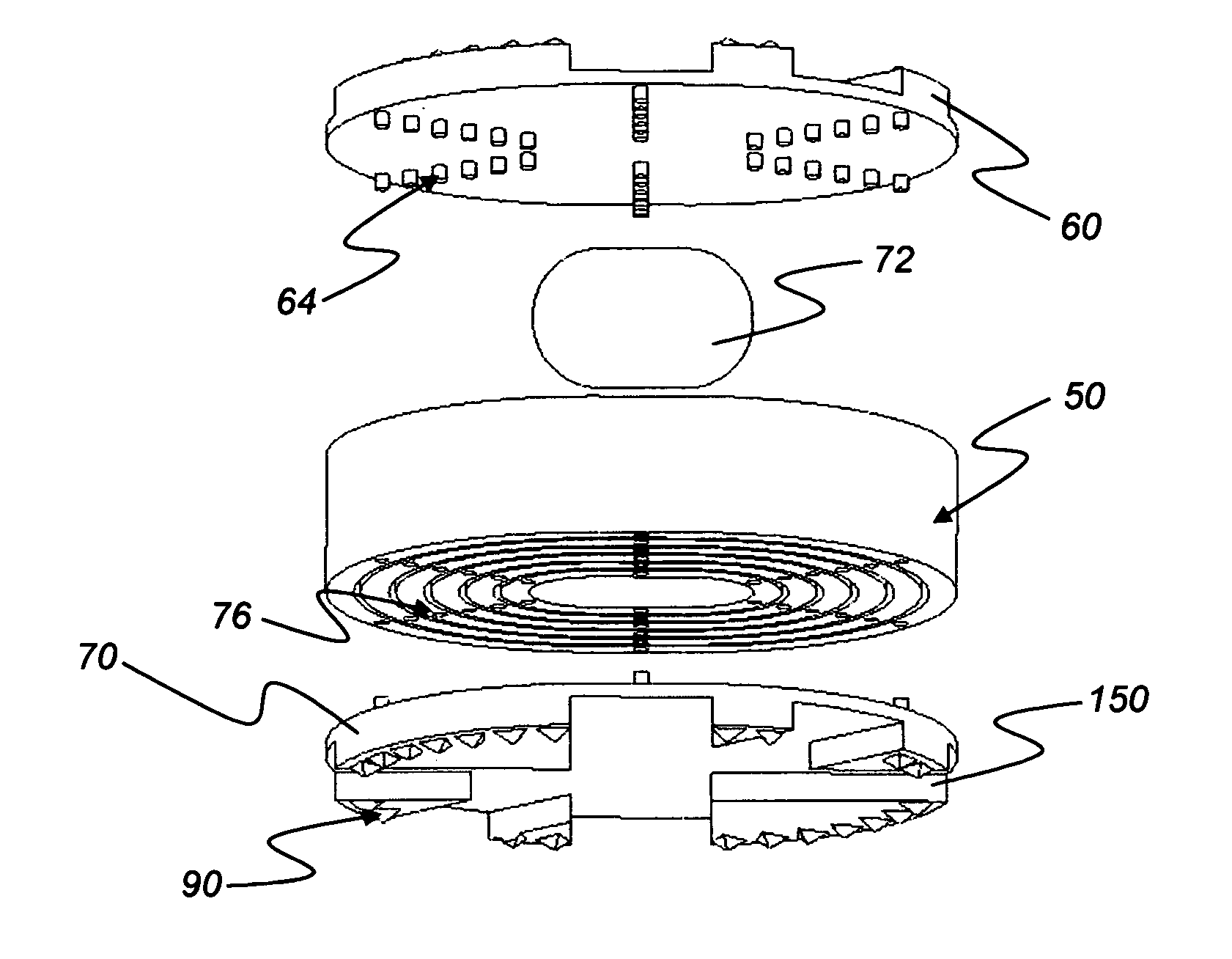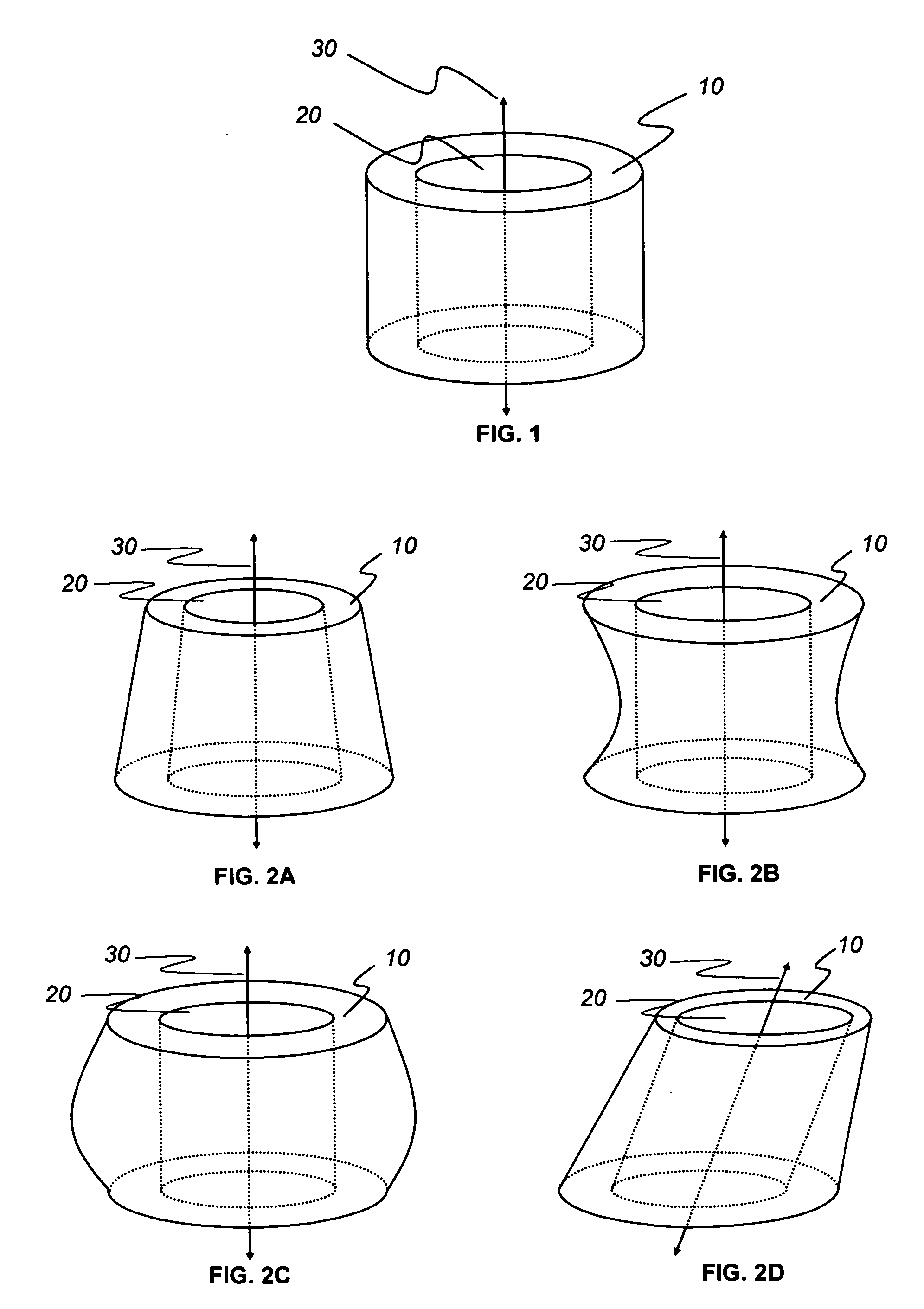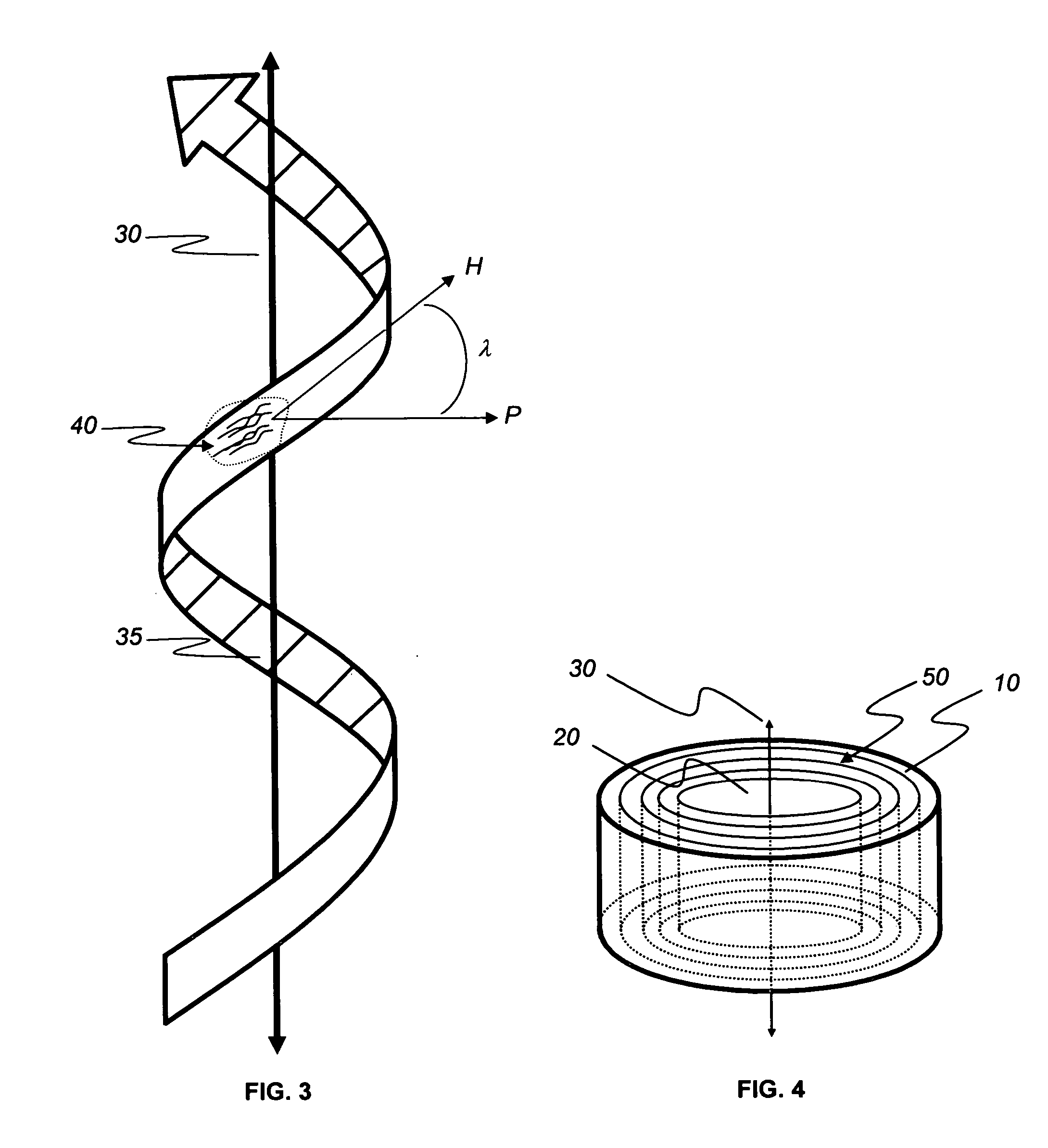Anatomic total disc replacement
a total disc and anatomic technology, applied in the field of artificial discs, can solve the problems of loss of muscle strength and control, leg pain, and displaced or damaged spinal discs, and achieve the effect of allowing flexibility of motion
- Summary
- Abstract
- Description
- Claims
- Application Information
AI Technical Summary
Benefits of technology
Problems solved by technology
Method used
Image
Examples
Embodiment Construction
[0031] While the invention will be described in connection with a preferred embodiment, it will be understood that it is not intended to limit the invention to this embodiment. On the contrary, it is intended to cover all alternatives, modifications and equivalents as may be included within the spirit and scope of the invention as defined by the appended claims.
[0032] As used herein, references to certain directions and orientations such as, for example, superior (towards the head), inferior (towards the feet), lateral (towards the side), medial (towards the midline), posterior (towards the back), and anterior (towards the front refer to such directions and orientations in a standing human. As they are applied to embodiments of the invention, it will be further understood that such directions and orientations refer to the position of such embodiments within a human after implantation, wherein the human is standing upright.
[0033] Unless specified otherwise, a physical property desi...
PUM
| Property | Measurement | Unit |
|---|---|---|
| pitch angle | aaaaa | aaaaa |
| pitch angle | aaaaa | aaaaa |
| outer radii | aaaaa | aaaaa |
Abstract
Description
Claims
Application Information
 Login to View More
Login to View More - R&D
- Intellectual Property
- Life Sciences
- Materials
- Tech Scout
- Unparalleled Data Quality
- Higher Quality Content
- 60% Fewer Hallucinations
Browse by: Latest US Patents, China's latest patents, Technical Efficacy Thesaurus, Application Domain, Technology Topic, Popular Technical Reports.
© 2025 PatSnap. All rights reserved.Legal|Privacy policy|Modern Slavery Act Transparency Statement|Sitemap|About US| Contact US: help@patsnap.com



